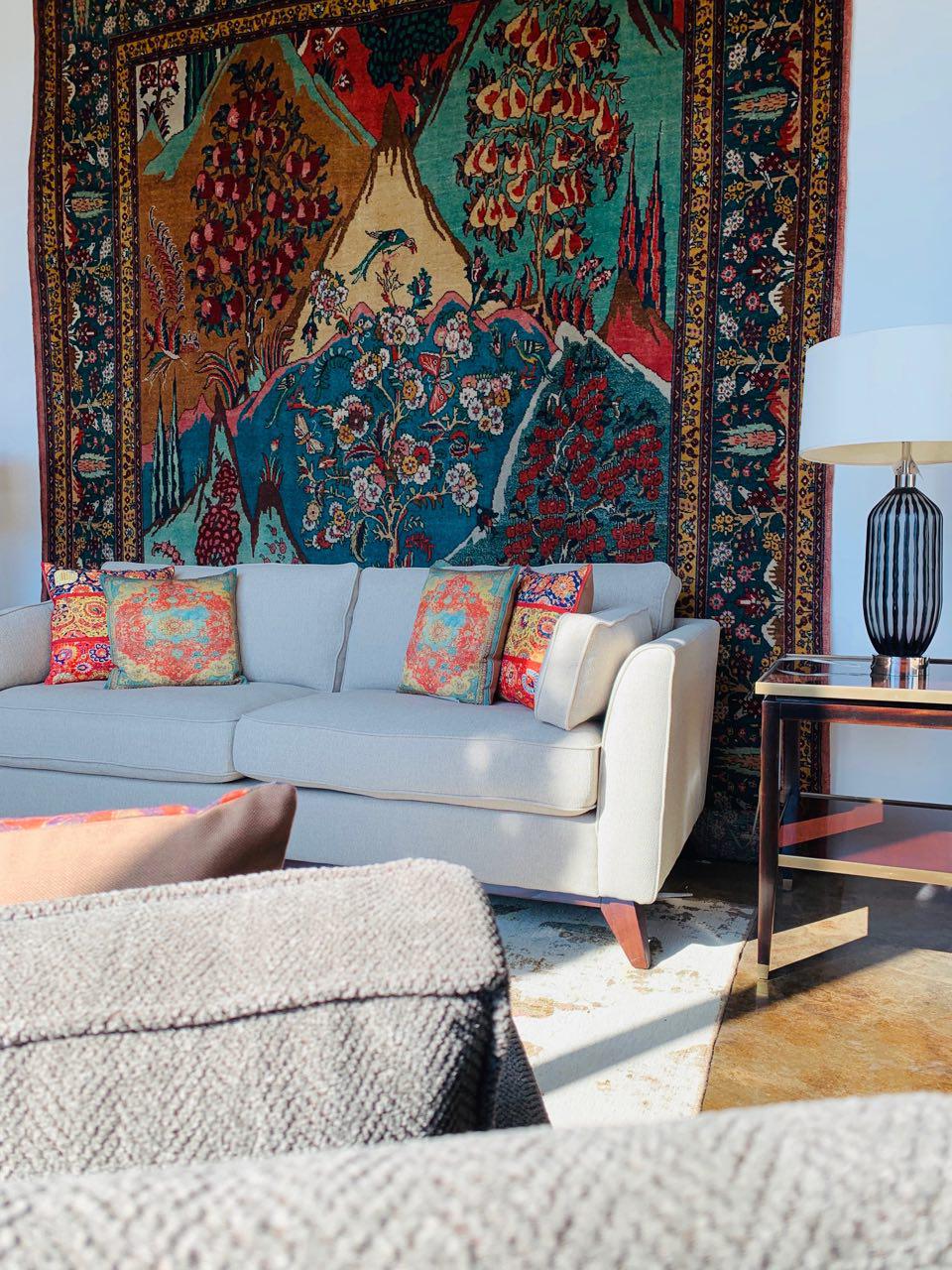Persian Rugs: Ten Things to Consider
When buying a Persian area rug, there are several important factors to consider. Here are ten things you should think about:
-
Authenticity: Ensure that the area rug is genuinely handmade in Iran, as Persian rugs are renowned for their quality and craftsmanship. Many countries like India, Pakistan and China make Persian style rugs which cost less, but true Persian rugs only come from Iran.
-
Rug Type: Consider the type of Persian rug you desire. There are many styles named for the region from which they originate such as Tabriz, Heriz, Kashan, Mahal, Esfahan, Bahktiari, Serapi, Kerman, or Shiraz. Each has its own unique characteristics and designs.
-
Knot Density: Pay attention to the knot density, which determines the level of detail and durability. Higher knot counts generally indicate finer quality rugs.
-
Material and Quality: Evaluate the materials used in the rug, with wool being the most common. Look for high-quality New Zealand wool or natural silk rugs for better durability and a luxurious feel.
-
Design and Pattern: Persian rugs are famous for their intricate designs and patterns. Decide on the pattern most appealing to you. Whether it's a floral motif, geometric shapes, or a central medallion design, everyone is drawn to something different.
-
Color Palette: Consider the color palette of the rug and how it will complement your existing decor. Persian rugs often feature rich, vibrant colors, but you can also find more muted or earthy tones. The majority of Persian rugs will be blue and red. Green is very rare as it is the holy color of Muhamad and would never be used where someone would step on it.
-
Size: Measure the area you plan to place the rug and ensure that the size of the rug matches your requirements. It should fit the space comfortably without overwhelming it. Utilize blue painter's tape on the floor to help you determine this. The most common sizes are 4x6, 5x7, 6x9, 8x10, 9x12, 10x14, and 12x15.
-
Condition: Inspect the condition of the rug, especially if you're considering an antique or vintage piece. Look for signs of wear, stains, or damage which may affect its value or appearance. If you love it enought to buy it, rug dealers will repair any damage prior to purchase. If not, don't be afraid to ask for a discount.
-
Pricing: Determine your budget and research average prices for the type and size of Persian rug you desire. Be prepared to invest in quality, as authentic Persian rugs can be a significant purchase. Most Persian rug showrooms are moving to online platforms where you can easily see your pricing.
-
Reputation and Seller: Research reputable rug dealers or stores known for their expertise in Persian rugs. If you do not feel respected by the rug dealer, leave immediately. Read reviews before you go and seek recommendations to ensure a reliable source. Word-of-mouth is the best way to receive the necessary guidance on where to purchase your Persian rug.
By considering these 10 factors, you can make a more informed decision when buying a Persian area rug to suit your design aesthetic and budget. Doing your research will ensure you find the perfect Persian rug for your home.
BONUS TIP - If you don't love it, don't buy it!
You should never feel rushed to make a decision. This will cost you a lot of money and you will never love the Persian rug as long as you have it. This is a major investment. Make sure you buy something you love because life's too short to buy a boring rug!


Comments (0)